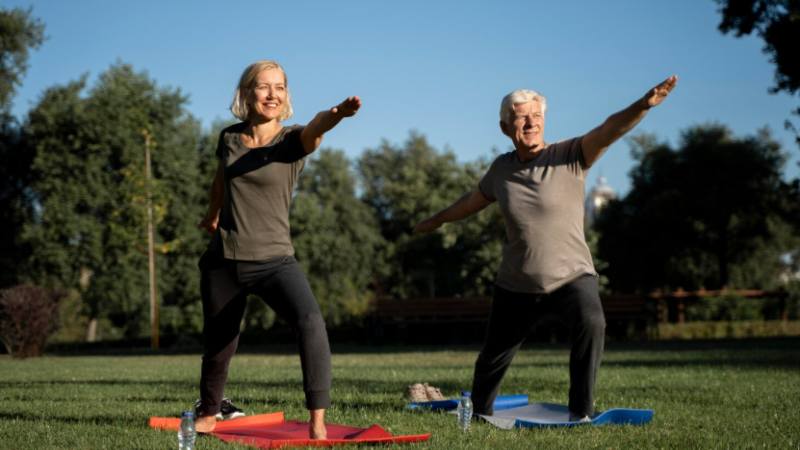As the population ages, the importance of promoting active and healthy lifestyles among seniors becomes increasingly paramount. An active lifestyle not only enhances the quality of life for the elderly but also contributes significantly to their physical, mental, and social well-being. Engaging in fun and varied activities for seniors is an excellent way for them to maintain their vitality and stay connected with the community. This article will explore the benefits of such activities and offer suggestions for incorporating them into daily life.
The Significance of Activities in Senior Wellness
Senior wellness is a holistic concept that encompasses the physical, mental, and emotional aspects of health. Incorporating regular activities into the routine of an older person supports all these dimensions, keeping the mind stimulated, the body active, and the spirit uplifted. The social aspect of participating in group activities counters feelings of isolation and loneliness, a common issue among the elderly population.
An active lifestyle is known to mitigate the risks of chronic diseases such as heart disease, obesity, and diabetes. Moreover, cognitive activities can bolster the brain’s health, guarding against memory loss and cognitive decline. With so many potential benefits, it’s clear that finding the right balance of activities is key to promoting a holistic approach to senior wellness.
Physical Activities: Keeping the Body Moving
Regular physical activity is imperative for maintaining strength, balance, and flexibility in seniors. Exercise programmes designed for older people, such as gentle yoga, tai chi, or water aerobics, offer safe and effective means to keep physically active. Even daily walks around the neighbourhood or local park can significantly impact overall health.
For those who enjoy group settings, dance classes and group exercise sessions can be both socially engaging and beneficial for cardiovascular health. Gardening is another excellent outdoor activity that not only provides moderate physical exertion but also a sense of satisfaction as seniors nurture and grow plants.
Cognitive Activities: Stimulating the Mind
Keeping the mind alert and engaged is just as crucial as physical fitness. Activities such as reading, puzzles, and board games help seniors challenge their minds and can be done either solo or with others. Learning new skills, like a language or musical instrument, has also been shown to have positive effects on cognitive health.
Many community centres and libraries offer workshops and classes that cater to older adults wanting to expand their knowledge or engage in creative pursuits like painting or writing. Such activities not only stimulate the mind but also provide avenues for self-expression and personal growth.
Social Activities: Fostering Connections
Social interactions play a vital role in promoting emotional well-being among seniors. Joining clubs or groups that align with personal interests can lead to new friendships and opportunities for socialisation. In-person gatherings may include book clubs, crafting circles, or culinary clubs, where conversation and camaraderie are as important as the activities themselves.
Social media and technology can also open doors for those unable to attend in-person events. Video calls and online meetups allow seniors to stay in touch with family, friends, and peer groups, regardless of their physical location.
Choosing the Right Activities
When selecting activities for seniors, it’s important to consider individual preferences, mobility levels, and health conditions. Activities should be enjoyable, accessible, and offer a degree of challenge without posing a risk of injury. Consulting with healthcare providers can help in designing a balanced activity schedule that aligns with any medical recommendations.
Incorporating elements of fun and play is also crucial. Activities should never feel like a chore; instead, they should be viewed as opportunities for enrichment and joy. Whether it’s a passion for gardening, a love for music, or an affinity for cooking, seniors need to engage in activities that resonate with them.
Supporting Active Aging
Family members and caregivers play a significant role in encouraging active aging. Offering support in participating in chosen activities, assisting with transportation, or even partaking in the activities themselves can mean a world of difference for seniors’ motivation and ability to stay active.
Senior living communities are also pivotal in providing easy access to a variety of programmes and activities. These communities often feature well-designed amenities and tailored events to accommodate the diverse interests of their residents.
Final Thoughts
An active aging lifestyle can be immensely rewarding, leading to improved health, sustained independence, and a brighter outlook on life. Through a variety of enjoyable activities for seniors, elderly individuals can thrive in their later years, experiencing the beauty of life to the fullest. It’s about choosing to live vibrantly, fostering growth, and cherishing every moment and connection made along the way.
To conclude, engaging in an array of activities is fundamental for seniors as they navigate the golden years of their lives. By prioritising physical, cognitive, and social enrichment, older adults can bolster their well-being and enjoy the richness that each day has to offer. Let us all contribute to promoting and sustaining an environment where seniors feel valued, active, and connected.

